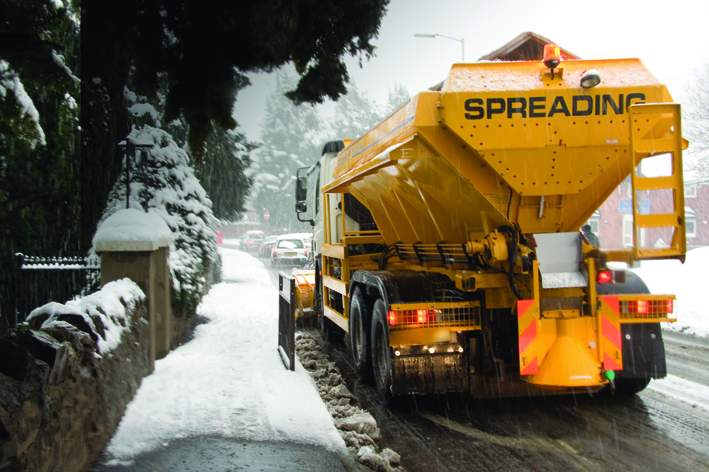Gritting our roads

During wintry conditions our overnight gritting programme makes our most important roads safer and free of ice for morning traffic. We also provide over 500 grit bins across the city for community use.
Quick links
Gritting during winter period
We aim to keep the most important roads clear during the winter service period (runs between October - March), which includes the resilient road network, bus routes, emergency service infrastructure and known problem locations. This equates to 180 miles of main roads - more than a third of the city’s entire road network.
We spread rock salt also known as grit on our roads using gritters, which are specially designed lorries with spreading units attached. By spreading grit on the roads, it prevents freezing and ice forming maintaining safe road conditions and the safety of residents.
We have produced a Winter Service Operational Plan, which presents our Winter Service provision in detail. This document is updated annually and is available for download on this page. If you have problems accessing or viewing the Winter Service Operational Plan, please email flooding@leicester.gov.uk.
Gritting routes
Footways, public footpaths and cycleways
Pedestrians are advised to take extra care as footways, public footpaths and cycleways are not gritted. During periods of heavy snowfall, when conditions permit, snow is cleared from footways in the city centre, some shopping areas, and some heavily used footways.
Due to limited public finances, we are unable to grit every road in the city. So, we provide grit bins for communities to grit known problem areas.
Find your nearest grit bin
The locations of all the grit bins in the city are presented in Appendix 8 of the Winter Service Operation Plan.
Please note: The grit is for use on the public highway not for use on private property.
Grit bin refill or replacement
Request a new grit bin
To request a new grit bin for your local area, where one is not already in place, you must submit a request to your local Councillor. You can find your Councillor, their contact details and surgery times using Your ward and entering your post code.
For the latest information on gritting
You can find out the latest by following us on Twitter and or Facebook where we will post relevant information to keep you informed.
Frequently asked questions
For grit to be most effective it requires the action of passing traffic to help activate it. The traffic helps mix grit into the snow and ice, dissolving it into brine and melting snowfall and ice. Grit is less effective at temperatures below -5°C and has no effect below -10°C.
Whilst we would like to be able to grit all roads, we do not have the financial resources required to achieve this. Therefore, we prioritise the roads we treat, which includes the resilient road network, bus routes, emergency service infrastructure and know problem locations. We cover 180 miles worth of roads in grit.
We use a specialist weather forecasting service and receive daily weather forecasts, predicting road temperatures and when they are likely to reach freezing point. We use this information to determine whether or not to grit and at what time we grit.
View our gritting routes map to find out.
We post messages on our corporate social media accounts to let you know when we are going to grit. Our gritters will usually go out at night time, when less traffic is on the roads and it is safe to do so.
We have several specialist gritting lorries that are used to grit our roads. These vehicles are operated by specially trained drivers. Our gritting lorries are on call twenty-four hours a day, seven days a week should a problem arise.
We have a maximum capacity of 2,700 tonnes of rock salt that we use to grit.
Please visit our Schools closures page to find out if your child’s school is shut during heavy snowfall or icy weather.
We cannot guarantee that all roads will be free from ice as we only treat roads that are part of our resilient road network, bus routes, emergency service infrastructure and known problem locations.
Even treated roads can still have icy patches so drivers need to be aware and always drive carefully during hazardous conditions and avoid travel, where possible.
Be aware that if it rains, that can wash away the grit, which means the roads may then re-freeze after they have been treated.
You can clear snow and ice from paths and pavements yourself. You will not be held legally responsible for any injuries if you have cleared the area carefully. Please follow the advice: Clear snow from a road, path or cycleway - GOV.UK.
It is important to check your vehicle is in good running order before you set out and consider regular servicing. This will minimise the chance of breakdown or accident. Please follow: Six simple checks to prepare your vehicle for winter - Met Office.
An emergency kit is essential addition to your car, particularly at the start of the winter season. Find out how to: Prepare a winter kit for your car - Met Office.
If you are worried about driving, we recommend you consider taking public transport.